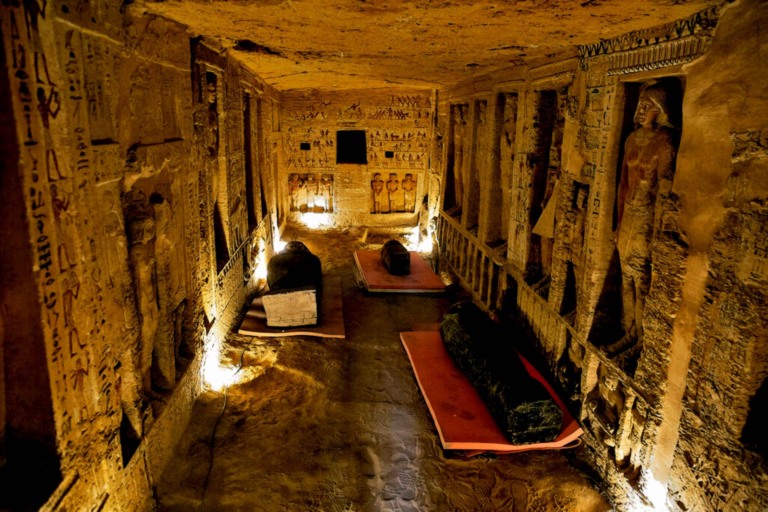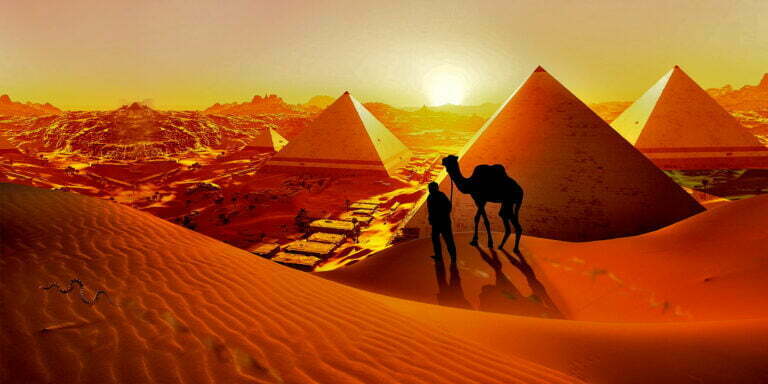
The Great Sphinx of Giza is an iconic and enigmatic monument located on the Giza Plateau, near Cairo, Egypt. It is one of the most recognizable symbols of ancient Egypt and an integral part of the Giza Necropolis, which also includes the famous Pyramids of Giza. The Sphinx is located near the Pyramids of Giza, and its precise purpose remains a subject of debate among historians and Egyptologists. It is often thought to have been built as a guardian statue for the pyramids and their associated complexes. The combination of the lion’s body and the pharaoh’s head in the Sphinx carries symbolic significance. The lion represents strength and power, while the pharaoh’s head represents divine authority and rulership. The Sphinx is famously missing its nose, which is believed to have been damaged or destroyed by various factors over the centuries. Here are some facts about the Great Sphinx of Giza:

The Great Pyramid of Giza holds a special place within this complex. It stands as the largest Egyptian pyramid and served as the monumental tomb of Pharaoh Khufu. Constructed in the early 26th century BC, over a span of approximately 27 years, this pyramid is not only the oldest of the Seven Wonders of the Ancient World but also the sole wonder that has remained largely intact through the ages. The colossal structure came into existence by quarrying an estimated 2.3 million large blocks, with a total weight of around 6 million tonnes. These stones do not exhibit uniform size or shape and are only roughly dressed. Mortar was used to bind the outer layers together. Local limestone from the Giza Plateau was the primary material for construction. Additionally, blocks of white limestone from Tura were transported by boat on the Nile to form the casing, while granite blocks from Aswan, some weighing up to 80 tons.

Memphis and its Necropolis go south from the Giza plateau, through Zawyet Elarian, Abu Ghurab, Abusir, Mit Rahina, and Saqqara, and north as far as Dahshur.

The Egyptian pyramids were built with so much care and precision that even our best modern tools can’t make something like them. It is thought that the Great Pyramid has about 2.3 million stone blocks that, depending on their size, weigh between 2 and 30 pounds each. People say that the base stones weigh about 50 tons. The base of the pyramid is almost 55,000 square meters, and each of its sides is more than 20,000 square meters.



